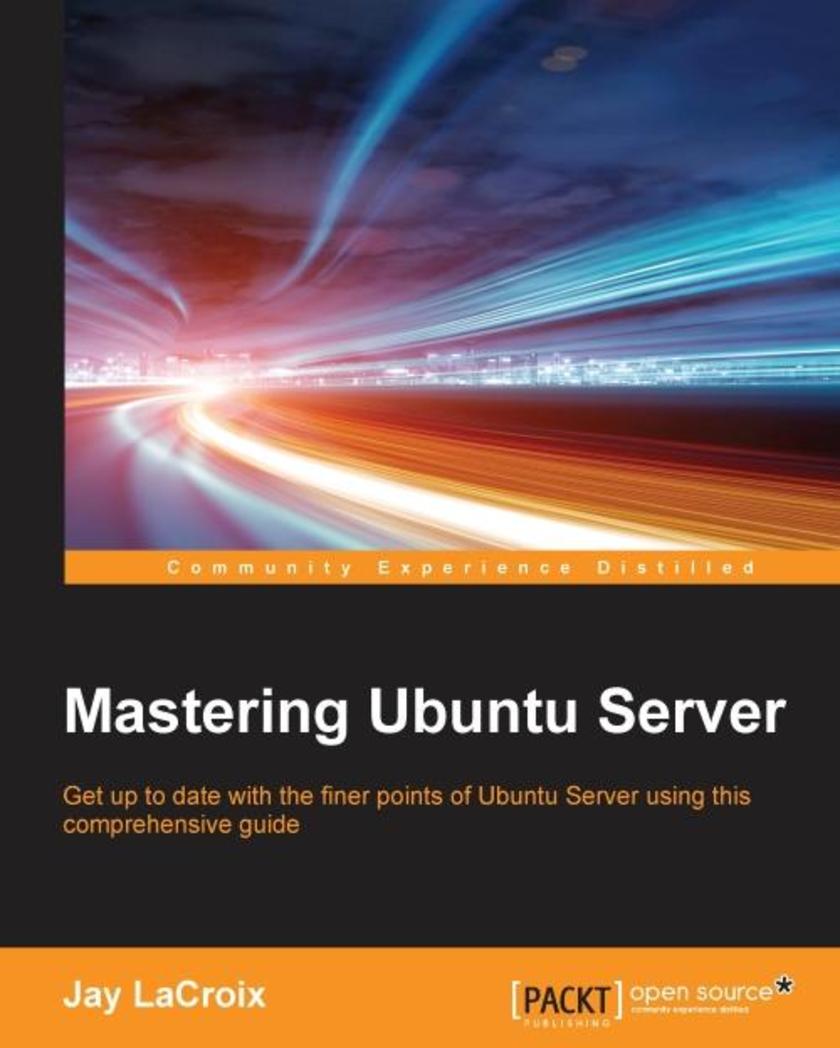
Mastering Ubuntu Server
¥90.46
Get up to date with the finer points of Ubuntu Server using this comprehensive guide About This Book Get well-versed with newly-added features in Ubuntu 16.04 Master the art of installing, managing, and troubleshooting Ubuntu Server A practical easy-to-understand book that will help you enhance your existing skills. Who This Book Is For This book is intended for readers with intermediate or advanced-beginner skills with Linux, who would like to learn all about setting up servers with Ubuntu Server. This book assumes that the reader knows the basics of Linux, such as editing configuration files and running basic commands. What You Will Learn Learn how to manage users, groups, and permissions Encrypt and decrypt disks with Linux Unified Key Setup /Luks Setup SSH for remote access, and connect it to other nodes Understand how to add, remove, and search for packages Use NFS and Samba to share directories with other users Get to know techniques for managing Apache and MariaDB Explore best practices and troubleshooting techniques In Detail Ubuntu is a Debian-based Linux operating system, and has various versions targeted at servers, desktops, phones, tablets and televisions. The Ubuntu Server Edition, also called Ubuntu Server, offers support for several common configurations, and also simplifies common Linux server deployment processes. With this book as their guide, readers will be able to configure and deploy Ubuntu Servers using Ubuntu Server 16.04, with all the skills necessary to manage real servers. The book begins with the concept of user management, group management, as well as file-system permissions. To manage your storage on Ubuntu Server systems, you will learn how to add and format storage and view disk usage. Later, you will also learn how to configure network interfaces, manage IP addresses, deploy Network Manager in order to connect to networks, and manage network interfaces. Furthermore, you will understand how to start and stop services so that you can manage running processes on Linux servers. The book will then demonstrate how to access and share files to or from Ubuntu Servers. You will learn how to create and manage databases using MariaDB and share web content with Apache. To virtualize hosts and applications, you will be shown how to set up KVM/Qemu and Docker and manage virtual machines with virt-manager. Lastly, you will explore best practices and troubleshooting techniques when working with Ubuntu Servers. By the end of the book, you will be an expert Ubuntu Server user well-versed in its advanced concepts. Style and Approach This book is an advanced guide that will show readers how to administer, manage, and deploy Ubuntu server and will also provide expert-level knowledge on advanced security and backup techniques.
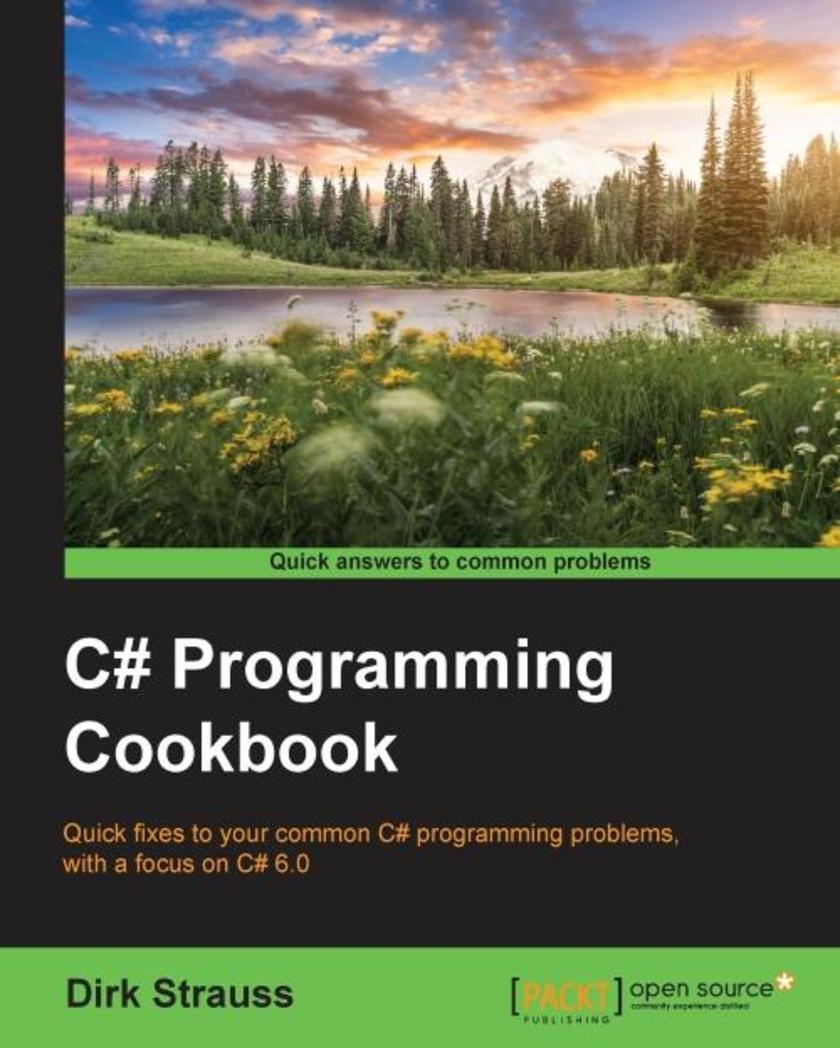
C# Programming Cookbook
¥90.46
Quick fixes to your common C# programming problems, with a focus on C# 6.0 About This Book Unique recipes for C#, that places it in its real-world context. You will be able to get yourself out of any coding-corner youve backed yourself into. All code samples available through GitHub to bring C#. In line with modern development workflows, written to the latest specification of C# 6.0. Who This Book Is For The book is aimed at developers who have basic familiarity with C# programming and will know the VS 2015 environment. What You Will Learn Write better and less code to achieve the same result as in previous versions of C#. Generate tests from the Code Contracts for mission critical methods. Integrate code in Visual Studio with GitHub. Create a web application in Azure. Design and build a microservice architecture Demystify the Rx library using Reactive extensions Write high performing codes in C# and understanding multi-threading. Security and Debugging. Implement Code Contracts on code in Visual Studio. In Detail During your application development workflow, there is always a moment when you need to get out of a tight spot. Through a recipe-based approach, this book will help you overcome common programming problems and get your applications ready to face the modern world. We start with C# 6, giving you hands-on experience with the new language features. Next, we work through the tasks that you perform on a daily basis such as working with strings, generics, and lots more. Gradually, we move on to more advanced topics such as the concept of object-oriented programming, asynchronous programming, reactive extensions, and code contracts. You will learn responsive high performance programming in C# and how to create applications with Azure. Next, we will review the choices available when choosing a source control solution. At the end of the book, we will show you how to create secure and robust code, and will help you ramp up your skills when using the new version of C# 6 and Visual Studio Style and Approach Unique recipe-based guide that will help you gain a solid understanding of the new concepts in C# 6 and Visual Studio Enterprise 2015 in a concise and technically correct manner.
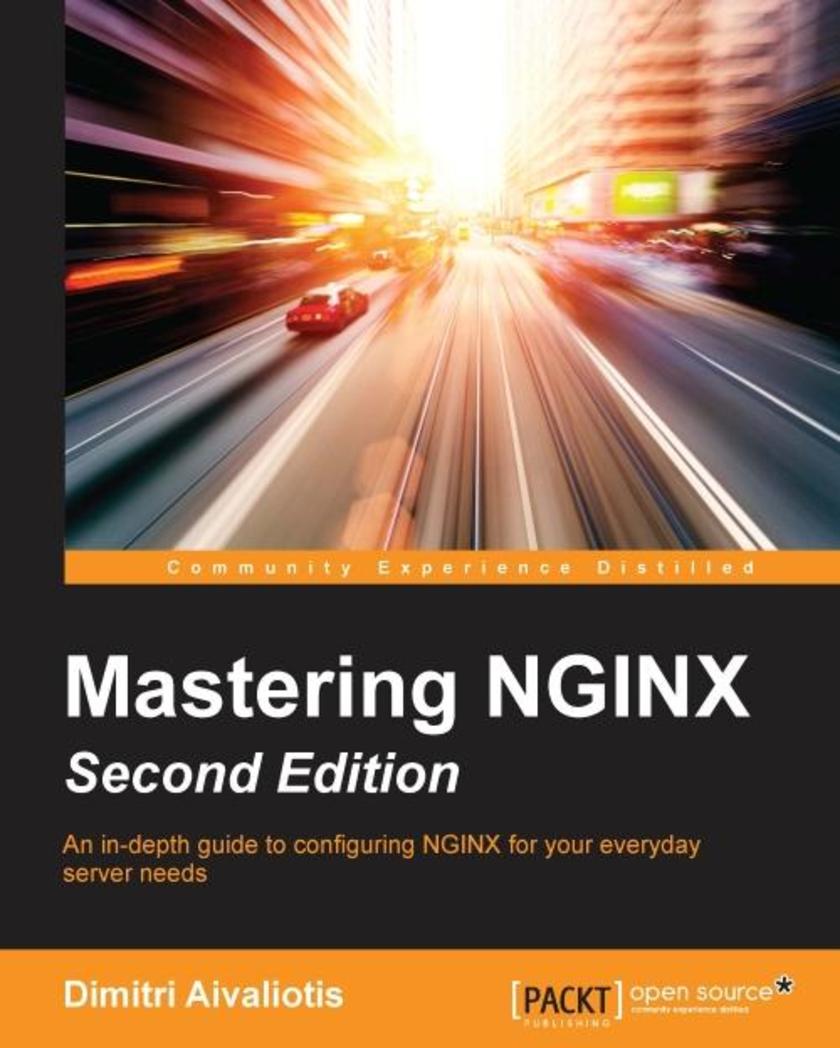
Mastering NGINX - Second Edition
¥90.46
An in-depth guide to configuring NGINX for your everyday server needs About This Book Get tips, tricks, and master insight to help you configure NGINX for any server situation Integrate NGINX into your applications architecture with is, using hands-on guidance and practical code samples that are free to use Troubleshoot configuration problems before and as they arise, for a seamless NGINX server experience Who This Book Is For This book is for system administrators and engineers who want to personalize NGINX, and design a robust configuration module to solve their hosting problems. Some knowledge of NGINX is a plus, but is not a prerequisite. What You Will Learn Compile the right third-party module to meet your needs Write an authentication server to use with the mail proxy module Create your own SSL certificates to encrypt connections Use try_files to solve your file-existence check problems Cache and compress responses to get speedier user interaction Integrate popular PHP frameworks with the FastCGI module Construct useful logging configurations In Detail NGINX is a high-performance HTTP server and mail proxy designed to use very few system resources. But despite its power it is often a challenge to properly configure NGINX to meet your expectations. Mastering Nginx is the solution – an insider’s guide that will clarify the murky waters of NGINX’s configuration. Tune NGINX for various situations, improve your NGINX experience with some of the more obscure configuration directives, and discover how to design and personalize a configuration to match your needs. To begin with, quickly brush up on installing and setting up the NGINX server on the OS and its integration with third-party modules. From here, move on to explain NGINX's mail proxy module and its authentication, and reverse proxy to solve scaling issues. Then see how to integrate NGINX with your applications to perform tasks. The latter part of the book focuses on working through techniques to solve common web issues and the know-hows using NGINX modules. Finally, we will also explore different configurations that will help you troubleshoot NGINX server and assist with performance tuning. Style and approach This is a mastering guide where you will follow an instructional, conversational approach working through problems and their solutions.
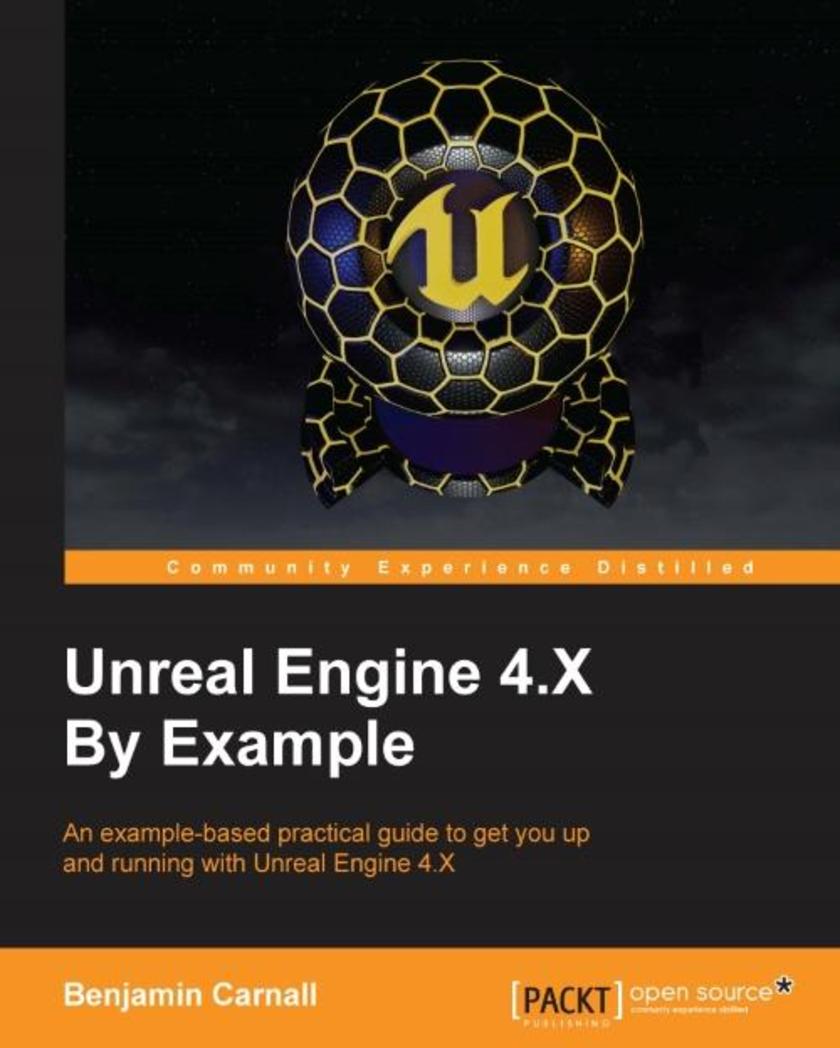
Unreal Engine 4.X By Example
¥90.46
An example-based practical guide to get you up and running with Unreal Engine 4.X About This Book A unique resource on Unreal with an interactive example based approach that is sure to get you up and running immediately Will feature four unique game projects that increase in complexity which will enable readers to build their game development skills using Unreal Engine 4 and the C++ programming language Will be the most up to date book in the market on Unreal with full coverage of the new features of UE4 Who This Book Is For Unreal Engine 4.X by Example was written for keen developers who wish to learn how to fully utilise Unreal Engine 4 to make awesome and engrossing game titles. Whether you are brand new to game development or a seasoned expert, you will be able to make use of the engine with C++. Experience with both C++ and other game engines is preferred before embarking on the Unreal by Example journey, but with a little external research into the basics of C++ programming, this book can take a complete game development novice to an Unreal Engine Developer! What You Will Learn Use C++ with Unreal Engine to boost the development potential of any Unreal Engine project Vastly improve workflow and content creation with the visual *ing system blueprint Design, test, and implement interesting game worlds using Unreal Engines built-in editor Build a networked, feature-rich first person shooter that you can play with others over LAN Build design-centric game worlds that play to needs of your game ideas Paint your game worlds via the creation and modification of visual shaders called materials Gain knowledge of other game development disciplines through the use of the Animation and Material tool sets Create feature-rich game projects with a sophisticated visual quality and feature set In Detail With Unreal Engine 4 being made free to use, for any keen game developer it is quickly becoming the most popular game engine in today’s development industry. The engine offers a rich feature set that can be customized and built upon through the use of C++. This book will cover how to work with Unreal Engine’s tool set all the way from the basics of the editor and the visual *ing system blueprint to the in-depth low-level creation of content using C++. This book will provide you with the skills you need to create feature-rich, captivating, and refined game titles with Unreal Engine 4. This book will take you through the creation of four unique game projects, designed so that you will be ready to apply the engine’s rich development capabilities. You will learn not only to take advantage of the visual tools of the engine, but also the vast and powerful programming feature set of Unreal Engine 4. Style and approach The best resource that any beginner level game developer can dream of with examples on leveraging the amazing graphics engine, beautiful character animation and game world generations etc. by means of exciting real world game generation.This book would be a very unique resource for any game developer who wants to get up and running with Unreal. The unique example-driven approach will take you through the most basic games towards the more complex ones and will gradually build your skill level.
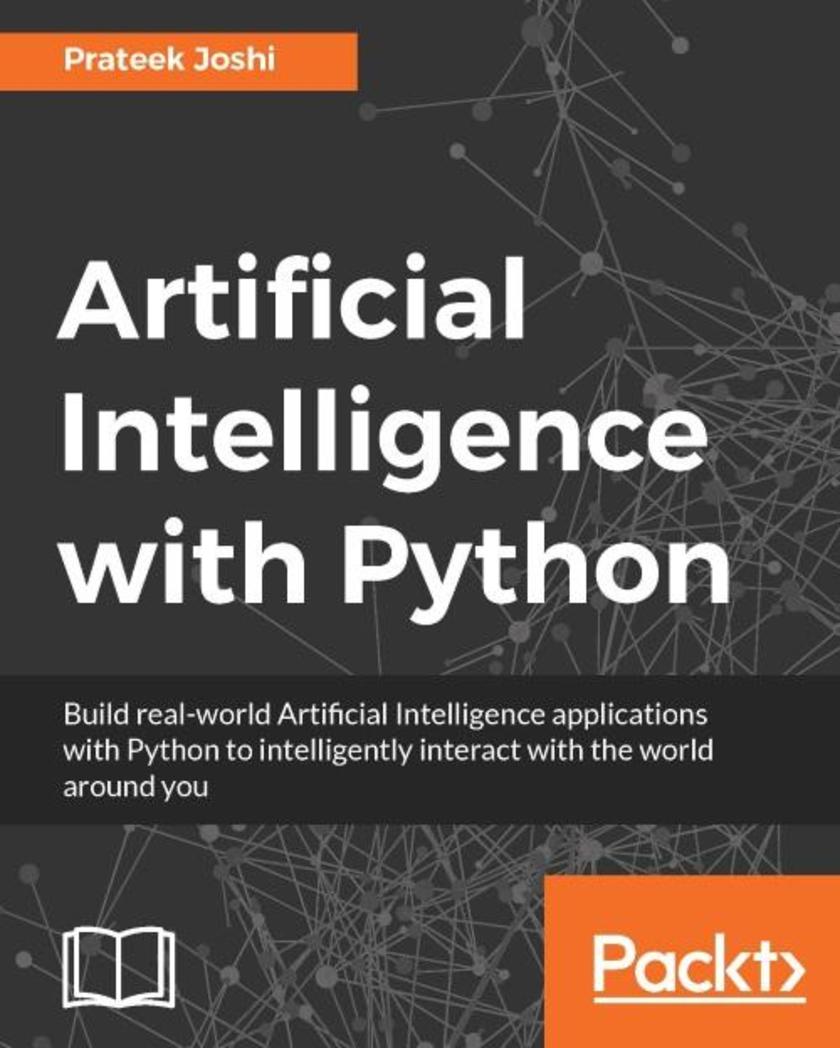
Artificial Intelligence with Python
¥90.46
Build real-world Artificial Intelligence applications with Python to intelligently interact with the world around you About This Book Step into the amazing world of intelligent apps using this comprehensive guide Enter the world of Artificial Intelligence, explore it, and create your own applications Work through simple yet insightful examples that will get you up and running with Artificial Intelligence in no time Who This Book Is For This book is for Python developers who want to build real-world Artificial Intelligence applications. This book is friendly to Python beginners, but being familiar with Python would be useful to play around with the code. It will also be useful for experienced Python programmers who are looking to use Artificial Intelligence techniques in their existing technology stacks. What You Will Learn Realize different classification and regression techniques Understand the concept of clustering and how to use it to automatically segment data See how to build an intelligent recommender system Understand logic programming and how to use it Build automatic speech recognition systems Understand the basics of heuristic search and genetic programming Develop games using Artificial Intelligence Learn how reinforcement learning works Discover how to build intelligent applications centered on images, text, and time series data See how to use deep learning algorithms and build applications based on it In Detail Artificial Intelligence is becoming increasingly relevant in the modern world where everything is driven by technology and data. It is used extensively across many fields such as search engines, image recognition, robotics, finance, and so on. We will explore various real-world scenarios in this book and you’ll learn about various algorithms that can be used to build Artificial Intelligence applications. During the course of this book, you will find out how to make informed decisions about what algorithms to use in a given context. Starting from the basics of Artificial Intelligence, you will learn how to develop various building blocks using different data mining techniques. You will see how to implement different algorithms to get the best possible results, and will understand how to apply them to real-world scenarios. If you want to add an intelligence layer to any application that’s based on images, text, stock market, or some other form of data, this exciting book on Artificial Intelligence will definitely be your guide! Style and approach This highly practical book will show you how to implement Artificial Intelligence. The book provides multiple examples enabling you to create smart applications to meet the needs of your organization. In every chapter, we explain an algorithm, implement it, and then build a smart application.
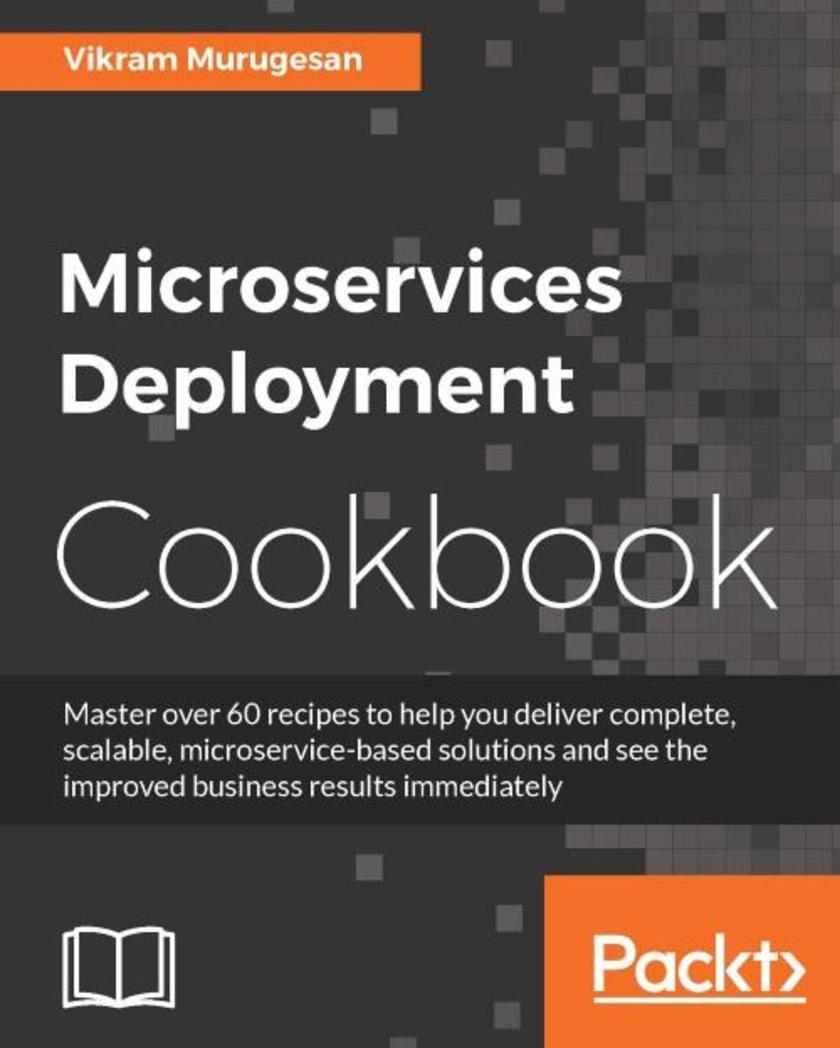
Microservices Deployment Cookbook
¥90.46
Master over 60 recipes to help you deliver complete, scalable, microservice-based solutions and see the improved business results immediately About This Book Adopt microservices-based architecture and deploy it at scale Build your complete microservice architecture using different recipes for different solutions Identify specific tools for specific scenarios and deliver immediate business results, correlate use cases, and adopt them in your team and organization Who This Book Is For This book is for developers, ops, and DevOps professionals who would like to put microservices to work and improve products, services, and operations. Those looking to build and deploy microservices will find this book useful, as well as managers and people at CXO level looking to adopt microservices in their organization. Prior knowledge of Java is expected. No prior knowledge of microservices is assumed. What You Will Learn Build microservices using Spring Boot, Wildfly Swarm, Dropwizard, and SparkJava Containerize your microservice using Docker Deploy microservices using Mesos/Marathon and Kubernetes Implement service discovery and load balancing using Zookeeper, Consul, and Nginx Monitor microservices using Graphite and Grafana Write stream programs with Kafka Streams and Spark Aggregate and manage logs using Kafka Get introduced to DC/OS, Docker Swarm, and YARN In Detail This book will help any team or organization understand, deploy, and manage microservices at scale. It is driven by a sample application, helping you gradually build a complete microservice-based ecosystem. Rather than just focusing on writing a microservice, this book addresses various other microservice-related solutions: deployments, clustering, load balancing, logging, streaming, and monitoring. The initial chapters offer insights into how web and enterprise apps can be migrated to scalable microservices. Moving on, you’ll see how to Dockerize your application so that it is ready to be shipped and deployed. We will look at how to deploy microservices on Mesos and Marathon and will also deploy microservices on Kubernetes. Next, you will implement service discovery and load balancing for your microservices. We’ll also show you how to build asynchronous streaming systems using Kafka Streams and Apache Spark. Finally, we wind up by aggregating your logs in Kafka, creating your own metrics, and monitoring the metrics for the microservice. Style and approach This book follows a recipe-driven approach and shows you how to plug and play with all the various pieces, putting them together to build a complete scalable microservice ecosystem. You do not need to study the chapters in order, as you can directly refer to the content you need for your situation.
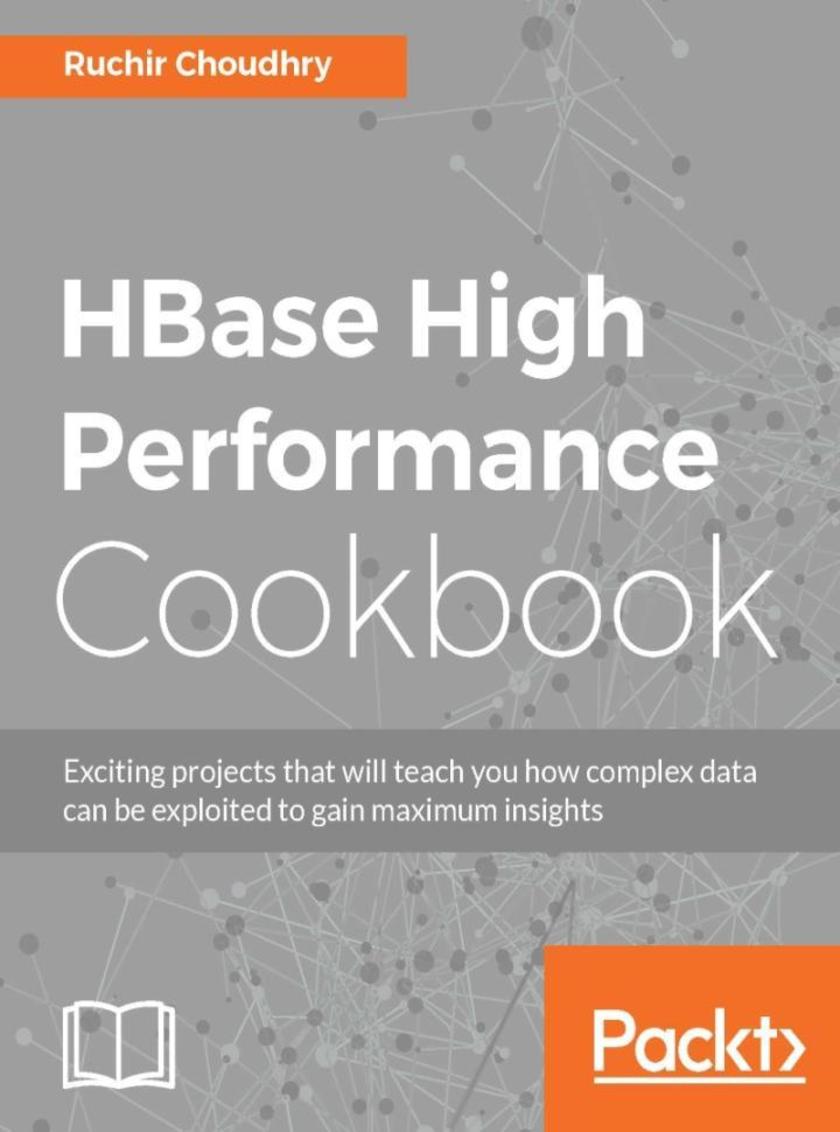
HBase High Performance Cookbook
¥90.46
Exciting projects that will teach you how complex data can be exploited to gain maximum insights About This Book Architect a good HBase cluster for a very large distributed system Get to grips with the concepts of performance tuning with HBase A practical guide full of engaging recipes and attractive screenshots to enhance your system’s performance Who This Book Is For This book is intended for developers and architects who want to know all about HBase at a hands-on level. This book is also for big data enthusiasts and database developers who have worked with other NoSQL databases and now want to explore HBase as another futuristic scalable database solution in the big data space. What You Will Learn Configure HBase from a high performance perspective Grab data from various RDBMS/Flat files into the HBASE systems Understand table design and perform CRUD operations Find out how the communication between the client and server happens in HBase Grasp when to use and avoid MapReduce and how to perform various tasks with it Get to know the concepts of scaling with HBase through practical examples Set up Hbase in the Cloud for a small scale environment Integrate HBase with other tools including ElasticSearch In Detail Apache HBase is a non-relational NoSQL database management system that runs on top of HDFS. It is an open source, disturbed, versioned, column-oriented store and is written in Java to provide random real-time access to big Data. We’ll start off by ensuring you have a solid understanding the basics of HBase, followed by giving you a thorough explanation of architecting a HBase cluster as per our project specifications. Next, we will explore the scalable structure of tables and we will be able to communicate with the HBase client. After this, we’ll show you the intricacies of MapReduce and the art of performance tuning with HBase. Following this, we’ll explain the concepts pertaining to scaling with HBase. Finally, you will get an understanding of how to integrate HBase with other tools such as ElasticSearch. By the end of this book, you will have learned enough to exploit HBase for boost system performance. Style and approach This book is intended for software quality assurance/testing professionals, software project managers, or software developers with prior experience in using Selenium and Java to test web-based applications. This books also provides examples for C#, Python, and Ruby users.
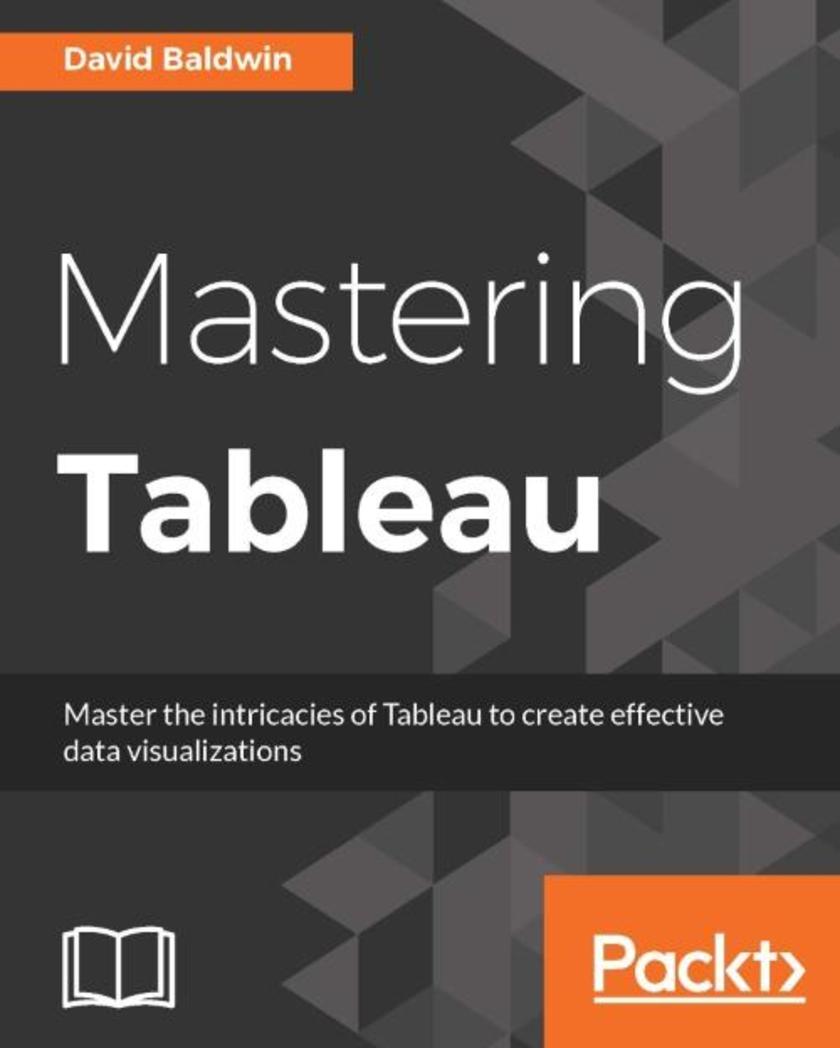
Mastering Tableau
¥90.46
Master the intricacies of Tableau to create effective data visualizations About This Book Arm yourself with an arsenal of advanced chart types and geocoding to efficiently and engagingly present information Map a grid over a network node diagram and use that grid to demonstrate loads, processing time, and more in Tableau Integrate R with Tableau by utilizing R functions, libraries, and saved models Who This Book Is For If you are a business analyst without developer-level programming skills, then this book is for you. You are expected to have at least a fundamental understanding of Tableau and basic knowledge of joins, however SQL knowledge is not assumed. You should have basic computer skills, including at least moderate Excel proficiency. What You Will Learn Create a worksheet that can display the current balance for any given period in time Recreate a star schema from in a data warehouse in Tableau Combine level of detail calculations with table calculations, sets, and parameters Create custom polygons to build filled maps for area codes in the USA Visualize data using a set of analytical and advanced charting techniques Know when to use Tableau instead of PowerPoint Build a dashboard and export it to PowerPoint In Detail Tableau has emerged as one of the most popular Business Intelligence solutions in recent times, thanks to its powerful and interactive data visualization capabilities. This book will empower you to become a master in Tableau by exploiting the many new features introduced in Tableau 10.0. You will embark on this exciting journey by getting to know the valuable methods of utilizing advanced calculations to solve complex problems. These techniques include creative use of different types of calculations such as row-level, aggregate-level, and more. You will discover how almost any data visualization challenge can be met in Tableau by getting a proper understanding of the tool’s inner workings and creatively exploring possibilities. You’ll be armed with an arsenal of advanced chart types and techniques to enable you to efficiently and engagingly present information to a variety of audiences through the use of clear, efficient, and engaging dashboards. Explanations and examples of efficient and inefficient visualization techniques, well-designed and poorly designed dashboards, and compromise options when Tableau consumers will not embrace data visualization will build on your understanding of Tableau and how to use it efficiently. By the end of the book, you will be equipped with all the information you need to create effective dashboards and data visualization solutions using Tableau. Style and approach This book takes a direct approach, to systematically evolve to more involved functionalities such as advanced calculation, parameters & sets, data blending and R integration. This book will help you gain skill in building visualizations previously beyond your capacity.
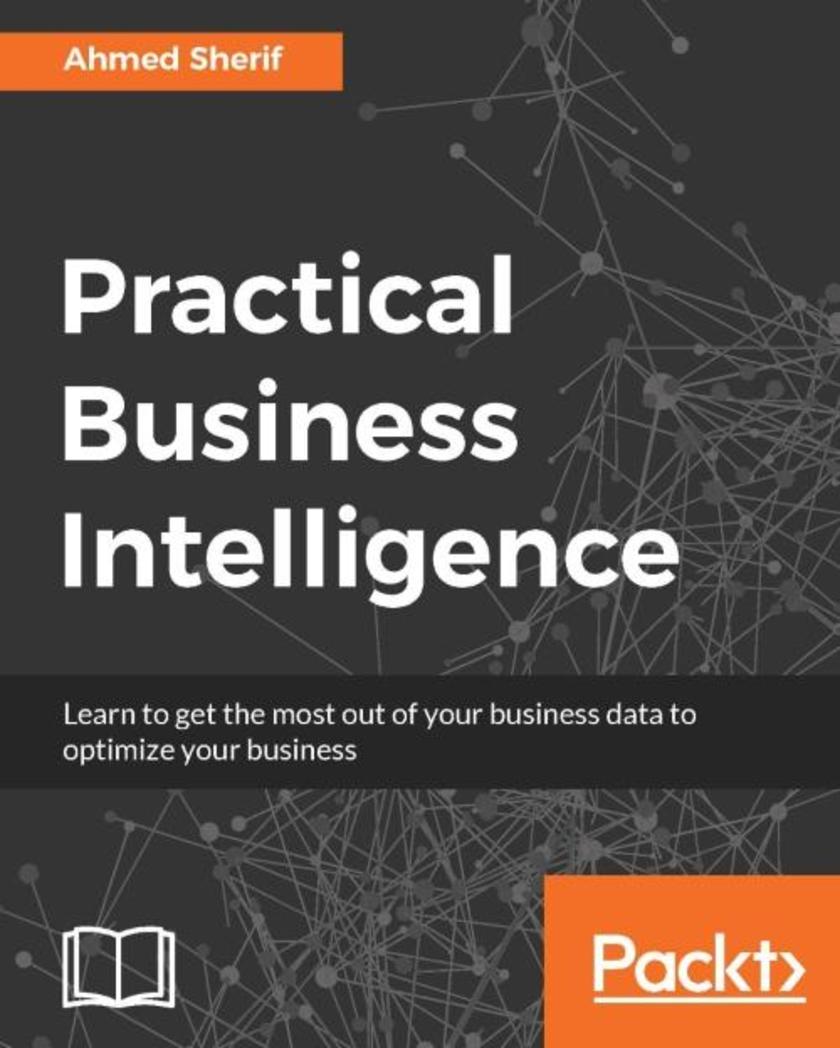
Practical Business Intelligence
¥90.46
Learn to get the most out of your business data to optimize your business About This Book This book will enable and empower you to break free of the shackles of spreadsheets Learn to make informed decisions using the data at hand with this highly practical, comprehensive guide This book includes real-world use cases that teach you how analytics can be put to work to optimize your business Using a fictional transactional dataset in raw form, you’ll work your way up to ultimately creating a fully-functional warehouse and a fleshed-out BI platform Who This Book Is For This book is for anyone who has wrangled with data to try to perform automated data analysis through visualizations for themselves or their customers. This highly-customized guide is for developers who know a bit about analytics but don't know how to make use of it in the field of business intelligence. What You Will Learn Create a BI environment that enables self-service reporting Understand SQL and the aggregation of data Develop a data model suitable for analytical reporting Connect a data warehouse to the analytic reporting tools Understand the specific benefits behind visualizations with D3.js, R, Tableau, QlikView, and Python Get to know the best practices to develop various reports and applications when using BI tools Explore the field of data analysis with all the data we will use for reporting In Detail Business Intelligence (BI) is at the crux of revolutionizing enterprise. Everyone wants to minimize losses and maximize profits. Thanks to Big Data and improved methodologies to analyze data, Data Analysts and Data Scientists are increasingly using data to make informed decisions. Just knowing how to analyze data is not enough, you need to start thinking how to use data as a business asset and then perform the right analysis to build an insightful BI solution. Efficient BI strives to achieve the automation of data for ease of reporting and analysis. Through this book, you will develop the ability to think along the right lines and use more than one tool to perform analysis depending on the needs of your business. We start off by preparing you for data analytics. We then move on to teach you a range of techniques to fetch important information from various databases, which can be used to optimize your business. The book aims to provide a full end-to-end solution for an environment setup that can help you make informed business decisions and deliver efficient and automated BI solutions to any company. It is a complete guide for implementing Business intelligence with the help of the most powerful tools like D3.js, R, Tableau, Qlikview and Python that are available on the market. Style and approach Packed with real-world examples, this pragmatic guide helps you polish your data and make informed decisions for your business. We cover both business and data analysis perspectives, blending theory and practical hands-on work so that you perceive data as a business asset.
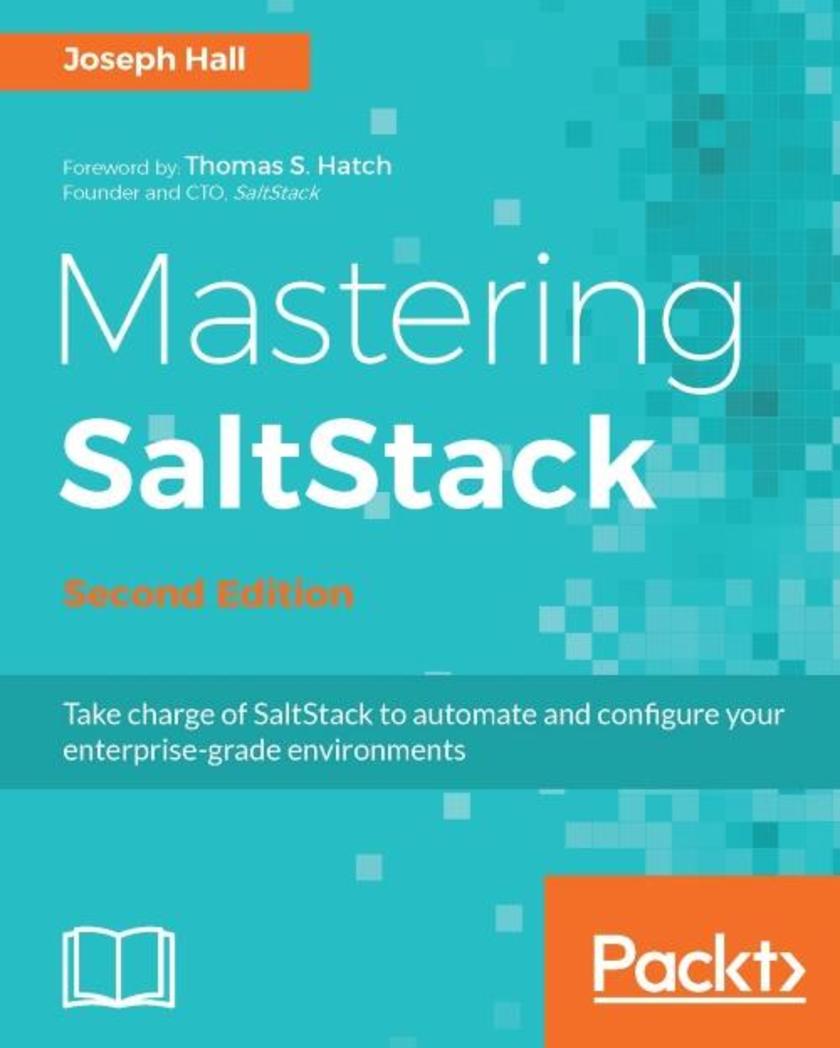
Mastering SaltStack - Second Edition
¥90.46
Take charge of SaltStack to automate and configure your enterprise-grade environments About This Book Automate tasks effectively and take charge of your infrastructure Effectively scale Salt to manage thousands of machines and tackle everyday problems Explore Salt’s inner workings and advance your knowledge of it Who This Book Is For This book is ideal for IT professionals and ops engineers who already manage groups of servers, but would like to expand their knowledge and gain expertise with SaltStack. This book explains the advanced features and concepts of Salt. A basic knowledge of Salt is required in order to get to grips with advanced Salt features. What You Will Learn Automate tasks effectively, so that your infrastructure can run itself Start building more complex concepts Master user-level internals Build scaling strategies Explore monitoring strategies Learn how to troubleshoot Salt and its subcomponents Explore best practices for Salt In Detail SaltStack is a powerful configuration management and automation suite designed to manage servers and tens of thousands of nodes. This book showcases Salt as a very powerful automation framework. We will review the fundamental concepts to get you in the right frame of mind, and then explore Salt in much greater depth. You will explore Salt SSH as a powerful tool and take Salt Cloud to the next level. Next, you’ll master using Salt services with ease in your infrastructure. You will discover methods and strategies to scale your infrastructure properly. You will also learn how to use Salt as a powerful monitoring tool. By the end of this book, you will have learned troubleshooting tips and best practices to make the entire process of using Salt pain-free and easy. Style and approach This book follows a step-by-step conversational tone. Topics are covered in detail through examples and a user-friendly approach.
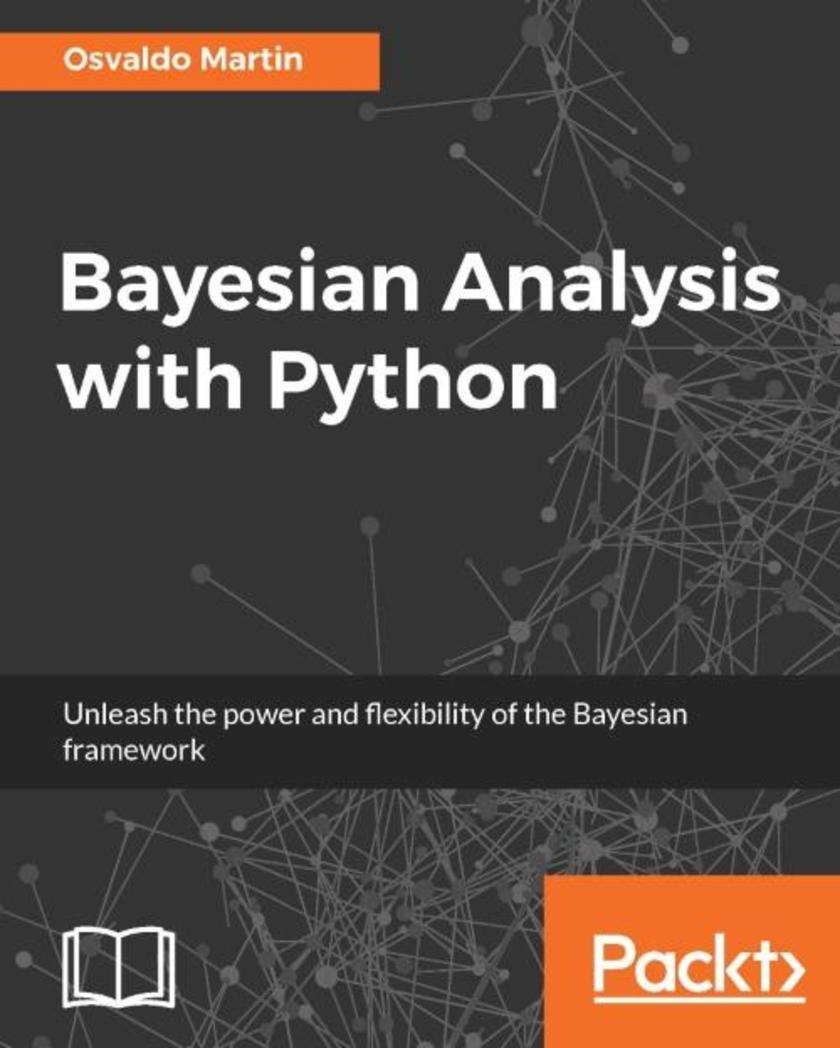
Bayesian Analysis with Python
¥90.46
Unleash the power and flexibility of the Bayesian framework About This Book Simplify the Bayes process for solving complex statistical problems using Python; Tutorial guide that will take the you through the journey of Bayesian analysis with the help of sample problems and practice exercises; Learn how and when to use Bayesian analysis in your applications with this guide. Who This Book Is For Students, researchers and data scientists who wish to learn Bayesian data analysis with Python and implement probabilistic models in their day to day projects. Programming experience with Python is essential. No previous statistical knowledge is assumed. What You Will Learn Understand the essentials Bayesian concepts from a practical point of view Learn how to build probabilistic models using the Python library PyMC3 Acquire the skills to sanity-check your models and modify them if necessary Add structure to your models and get the advantages of hierarchical models Find out how different models can be used to answer different data analysis questions When in doubt, learn to choose between alternative models. Predict continuous target outcomes using regression analysis or assign classes using logistic and softmax regression. Learn how to think probabilistically and unleash the power and flexibility of the Bayesian framework In Detail The purpose of this book is to teach the main concepts of Bayesian data analysis. We will learn how to effectively use PyMC3, a Python library for probabilistic programming, to perform Bayesian parameter estimation, to check models and validate them. This book begins presenting the key concepts of the Bayesian framework and the main advantages of this approach from a practical point of view. Moving on, we will explore the power and flexibility of generalized linear models and how to adapt them to a wide array of problems, including regression and classification. We will also look into mixture models and clustering data, and we will finish with advanced topics like non-parametrics models and Gaussian processes. With the help of Python and PyMC3 you will learn to implement, check and expand Bayesian models to solve data analysis problems. Style and approach Bayes algorithms are widely used in statistics, machine learning, artificial intelligence, and data mining. This will be a practical guide allowing the readers to use Bayesian methods for statistical modelling and analysis using Python.
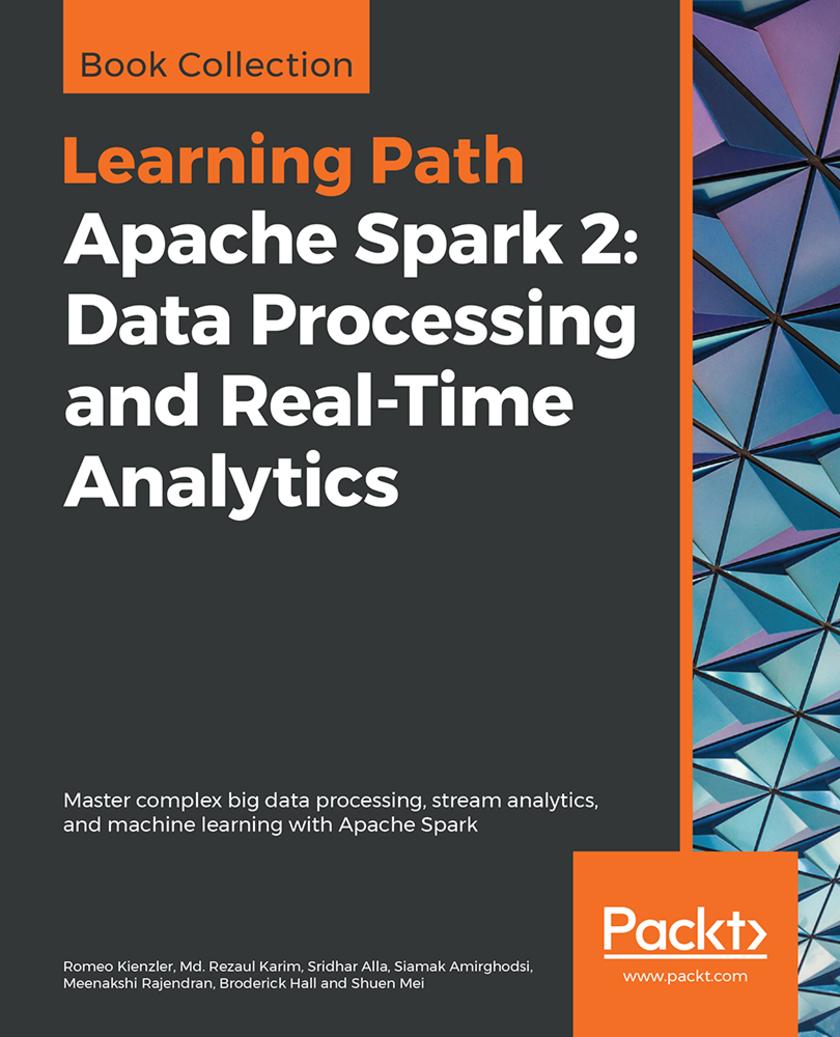
Apache Spark 2: Data Processing and Real-Time Analytics
¥90.46
Build efficient data flow and machine learning programs with this flexible, multi-functional open-source cluster-computing framework Key Features *Master the art of real-time big data processing and machine learning *Explore a wide range of use-cases to analyze large data *Discover ways to optimize your work by using many features of Spark 2.x and Scala Book Description Apache Spark is an in-memory, cluster-based data processing system that provides a wide range of functionalities such as big data processing, analytics, machine learning, and more. With this Learning Path, you can take your knowledge of Apache Spark to the next level by learning how to expand Spark's functionality and building your own data flow and machine learning programs on this platform. You will work with the different modules in Apache Spark, such as interactive querying with Spark SQL, using DataFrames and datasets, implementing streaming analytics with Spark Streaming, and applying machine learning and deep learning techniques on Spark using MLlib and various external tools. By the end of this elaborately designed Learning Path, you will have all the knowledge you need to master Apache Spark, and build your own big data processing and analytics pipeline quickly and without any hassle. This Learning Path includes content from the following Packt products: *Mastering Apache Spark 2.x by Romeo Kienzler *Scala and Spark for Big Data Analytics by Md. Rezaul Karim, Sridhar Alla *Apache Spark 2.x Machine Learning Cookbook by Siamak Amirghodsi, Meenakshi Rajendran, Broderick Hall, Shuen MeiCookbook What you will learn *Get to grips with all the features of Apache Spark 2.x *Perform highly optimized real-time big data processing *Use ML and DL techniques with Spark MLlib and third-party tools *Analyze structured and unstructured data using SparkSQL and GraphX *Understand tuning, debugging, and monitoring of big data applications *Build scalable and fault-tolerant streaming applications *Develop scalable recommendation engines Who this book is for If you are an intermediate-level Spark developer looking to master the advanced capabilities and use-cases of Apache Spark 2.x, this Learning Path is ideal for you. Big data professionals who want to learn how to integrate and use the features of Apache Spark and build a strong big data pipeline will also find this Learning Path useful. To grasp the concepts explained in this Learning Path, you must know the fundamentals of Apache Spark and Scala.
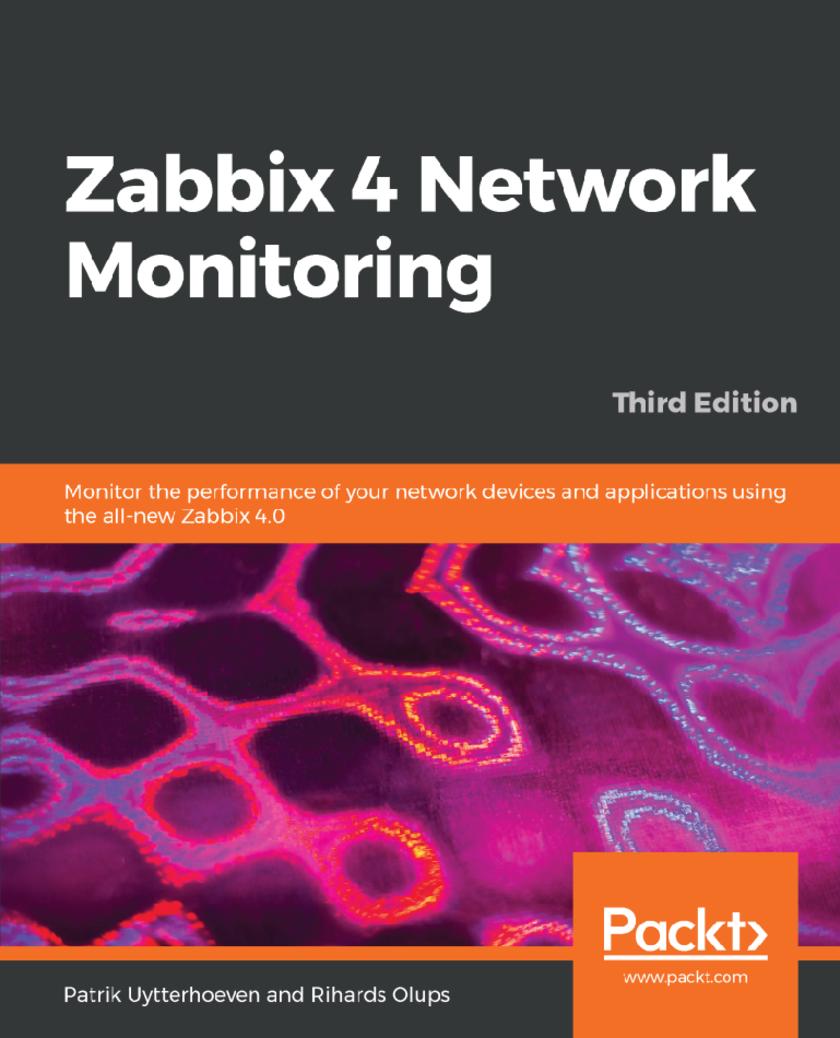
Zabbix 4 Network Monitoring
¥90.46
Gather detailed statistics and deploy impressive business solutions with Zabbix 4.0 Key Features *Experience the full impact of Zabbix 4.0, a useful and increasingly popular tool *Enhance your network’s performance and manage hosts and systems *A step-by-step guide to smarter network monitoring Book Description Zabbix 4 Network Monitoring is the perfect starting point for monitoring the performance of your network devices and applications with Zabbix. Even if you’ve never used a monitoring solution before, this book will get you up and running quickly. You’ll learn to monitor more sophisticated operations with ease and soon feel in complete control of your network, ready to meet any challenges you might face. Starting with the installation, you will discover the new features in Zabbix 4.0. You will then get to grips with native Zabbix agents and Simple Network Management Protocol (SNMP) devices. You will also explore Zabbix's integrated functionality for monitoring Java application servers and VMware. This book also covers notifications, permission management, system maintenance, and troubleshooting, so you can be confident that every potential challenge and task is under your control. If you're working with larger environments, you'll also be able to find out more about distributed data collection using Zabbix proxies. Once you're confident and ready to put these concepts into practice, you will understand how to optimize and improve performance. Troubleshooting network issues is vital for anyone working with Zabbix, so the book also helps you work through any technical snags and glitches you might face. By the end of this book, you will have learned more advanced techniques to fine-tune your system and make sure it is in a healthy state. What you will learn *Install Zabbix server and an agent from source *Manage hosts, users, and permissions while acting upon monitored conditions *Visualize data with the help of ad hoc graphs, custom graphs, and maps *Simplify complex configurations and learn to automate them *Monitor everything from web pages to IPMI devices and Java applications to VMware stats *Configure Zabbix to send alerts including problem severity and time periods *Troubleshoot any network issue Who this book is for If you're new to Zabbix look no further than this book. Zabbix 4 Network Monitoring is for system and network administrators who are looking to put their knowledge to work with Zabbix 4.0.
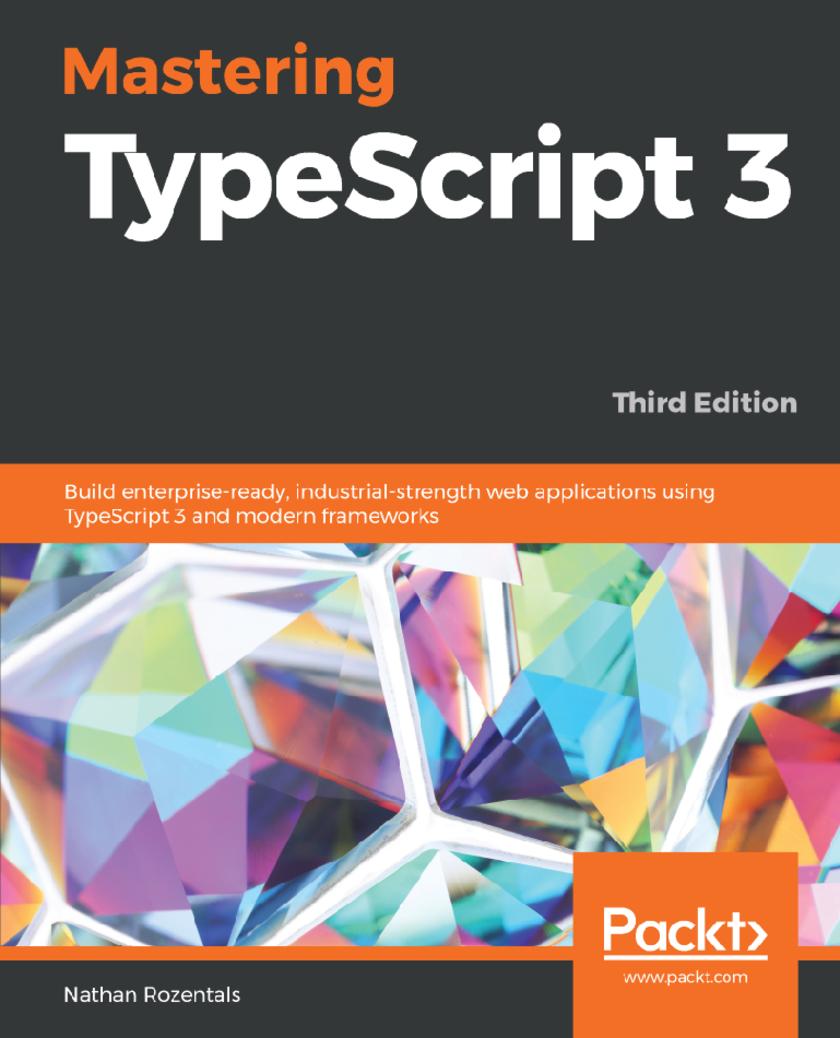
Mastering TypeScript 3
¥90.46
Master the TypeScript language and its latest features. Explore modern application frameworks and utilize industry best practices in TDD, OOP and UI Design. Key Features * Learn the key features of TypeScript 3 and explore advanced language features through in-depth discussions. * Use TypeScript with modern frameworks including Backbone, Angular, Aurelia, React, and Node. * Explore TDD practices, OOP techniques, and industry best practices to create high-quality, modular, and adaptable applications. Book Description TypeScript is both a language and a set of tools to generate JavaScript. It was designed by Anders Hejlsberg at Microsoft to help developers write enterprise-scale JavaScript. Starting with an introduction to the TypeScript language, before moving on to basic concepts, each section builds on previous knowledge in an incremental and easy-to-understand way. Advanced and powerful language features are all covered, including asynchronous programming techniques, decorators, and generics. This book explores many modern JavaScript and TypeScript frameworks side by side in order for the reader to learn their respective strengths and weaknesses. It will also thoroughly explore unit and integration testing for each framework. Best-of-breed applications utilize well-known design patterns in order to be scalable, maintainable, and testable. This book explores some of these object-oriented techniques and patterns, and shows real-world implementations. By the end of the book, you will have built a comprehensive, end-to-end web application to show how TypeScript language features, design patterns, and industry best practices can be brought together in a real-world scenario. What you will learn * Gain insights into core and advanced TypeScript language features * Integrate existing JavaScript libraries and third-party frameworks using declaration files * Target popular JavaScript frameworks, such as Angular, React, and more * Create test suites for your application with Jasmine and Selenium * Organize your application code using modules, AMD loaders, and SystemJS * Explore advanced object-oriented design principles * Compare the various MVC implementations in Aurelia, Angular, React, and more Who this book is for This guide to the TypeScript that starts with basic concepts, and then builds on this knowledge to introduce more advanced language features and frameworks. No prior knowledge of JavaScript is required, although some prior programming experience is assumed. If you are keen to learn TypeScript, this book will give you all of the necessary knowledge and skills to tackle any TypeScript project. If you are already an experienced JavaScript or TypeScript developer, then this book will take your skills to the next level. Learn how to use TypeScript with a multitude of modern frameworks, and choose the best framework for your project requirements. Investigate techniques for Test Driven Development, explore industry-standard design patterns, and learn how to put together a full production-ready TypeScript application.
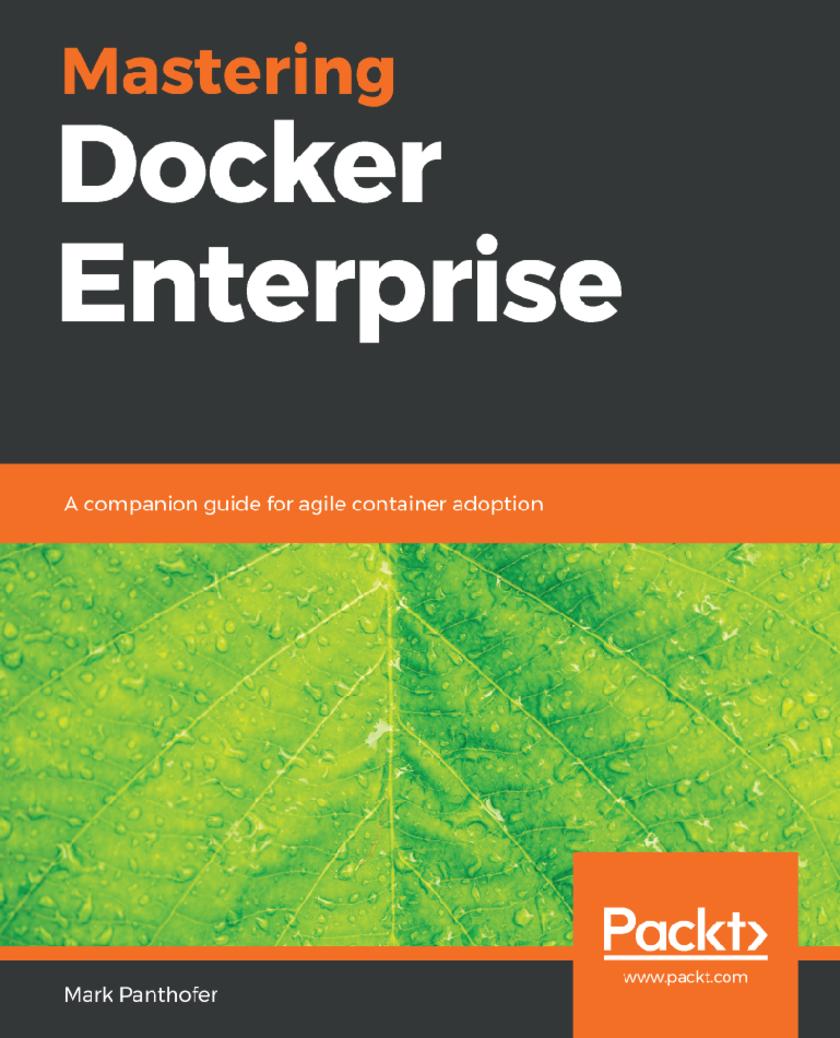
Mastering Docker Enterprise
¥90.46
A journey toward containerized applications in production with a cloud-portable, secure, robust and highly available Docker Enterprise platform. Key Features * Get an insider’s view into the container movement and Docker Enterprise * Manage the transformation associated with enterprise container adoption * Walk through the enterprise container adoption journey Book Description While known mostly as the open source engine behind tens of millions of server nodes, Docker also offers commercially supported enterprise tooling known as the Docker Enterprise. This platform leverages the deep roots from Docker Engine - Community (formerly Docker CE) and Kubernetes, but adds support and tooling to efficiently operate a secure container platform at scale. With hundreds of enterprises on board, best practices and adoption patterns are emerging rapidly. These learning points can be used to inform adopters and help manage the enterprise transformation associated with enterprise container adoption. This book starts by explaining the case for Docker Enterprise, as well as its structure and reference architecture. From there, we progress through the PoC,pilot and production stages as a working model for adoption, evolving the platform’s design and configuration for each stage and using detailed application examples along the way to clarify and demonstrate important concepts.The book concludes with Docker’s impact on other emerging software technologies, such as Blockchain and Serverless computing. By the end of this book, you’ll have a better understanding of what it takes to get your enterprise up and running with Docker Enterprise and beyond. What you will learn * Understand why containers are important to an enterprise * Understand the features and components of Docker Enterprise 2 * Find out about the PoC, pilot, and production adoption phases * Get to know the best practices for installing and operating Docker Enterprise * Understand what is important for a Docker Enterprise in production * Run Kubernetes on Docker Enterprise Who this book is for This book is for Software Architects, DevOps Engineers, Tech Ops, Docker professionals, or any IT professional working with Docker and containers who wants to move containerized workloads to production. This book discusses the enterprise adoption of Docker and Kubernetes,therefore a basic understanding of Docker concepts will be helpful.
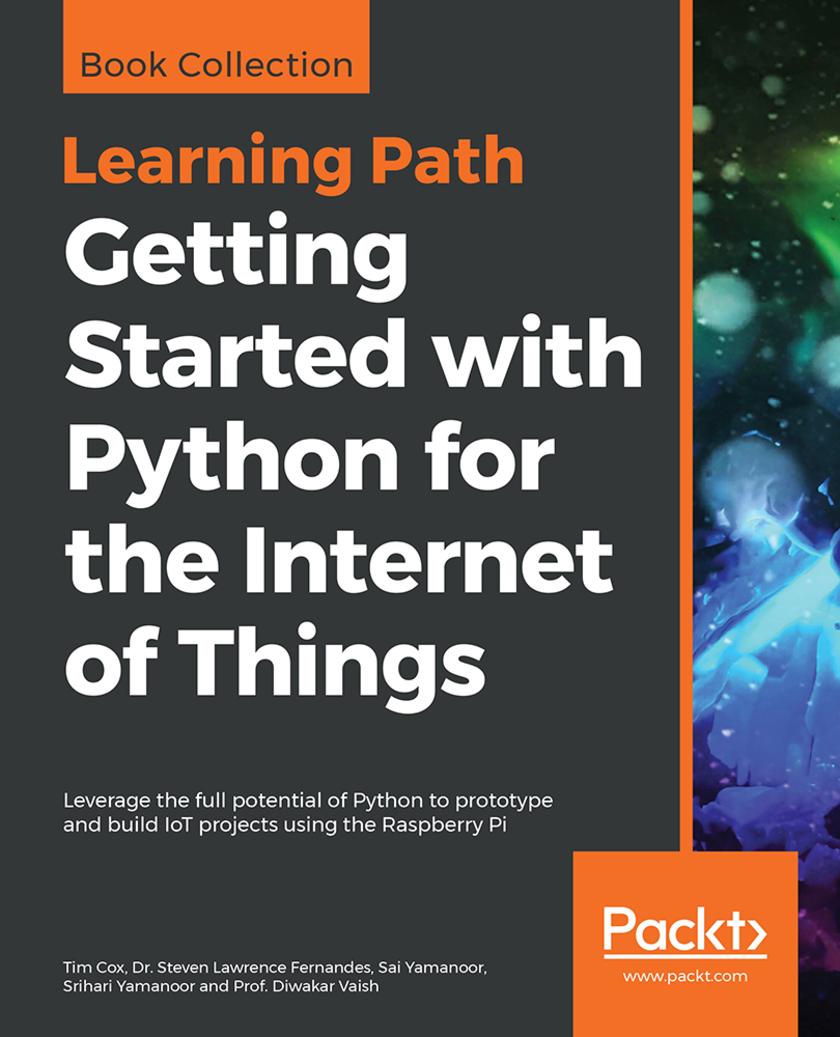
Getting Started with Python for the Internet of Things
¥90.46
Build clever, collaborative, and powerful automation systems with the Raspberry Pi and Python. Key Features * Create your own Pi-Rover or Pi-Hexipod robots * Develop practical applications in Python using Raspberry Pi * Build your own Jarvis, a highly advanced computerized AI Book Description This Learning Path takes you on a journey in the world of robotics and teaches you all that you can achieve with Raspberry Pi and Python. It teaches you to harness the power of Python with the Raspberry Pi 3 and the Raspberry Pi zero to build superlative automation systems that can transform your business. You will learn to create text classifiers, predict sentiment in words, and develop applications with the Tkinter library. Things will get more interesting when you build a human face detection and recognition system and a home automation system in Python, where different appliances are controlled using the Raspberry Pi. With such diverse robotics projects, you'll grasp the basics of robotics and its functions, and understand the integration of robotics with the IoT environment. By the end of this Learning Path, you will have covered everything from configuring a robotic controller, to creating a self-driven robotic vehicle using Python. * Raspberry Pi 3 Cookbook for Python Programmers - Third Edition by Tim Cox, Dr. Steven Lawrence Fernandes * Python Programming with Raspberry Pi by Sai Yamanoor, Srihari Yamanoor * Python Robotics Projects by Prof. Diwakar Vaish What you will learn * Build text classifiers and predict sentiment in words with the Tkinter library * Develop human face detection and recognition systems * Create a neural network module for optical character recognition * Build a mobile robot using the Raspberry Pi as a controller * Understand how to interface sensors, actuators, and LED displays work * Apply machine learning techniques to your models * Interface your robots with Bluetooth Who this book is for This Learning Path is specially designed for Python developers who want to take their skills to the next level by creating robots that can enhance people’s lives. Familiarity with Python and electronics will aid understanding the concepts in this Learning Path.
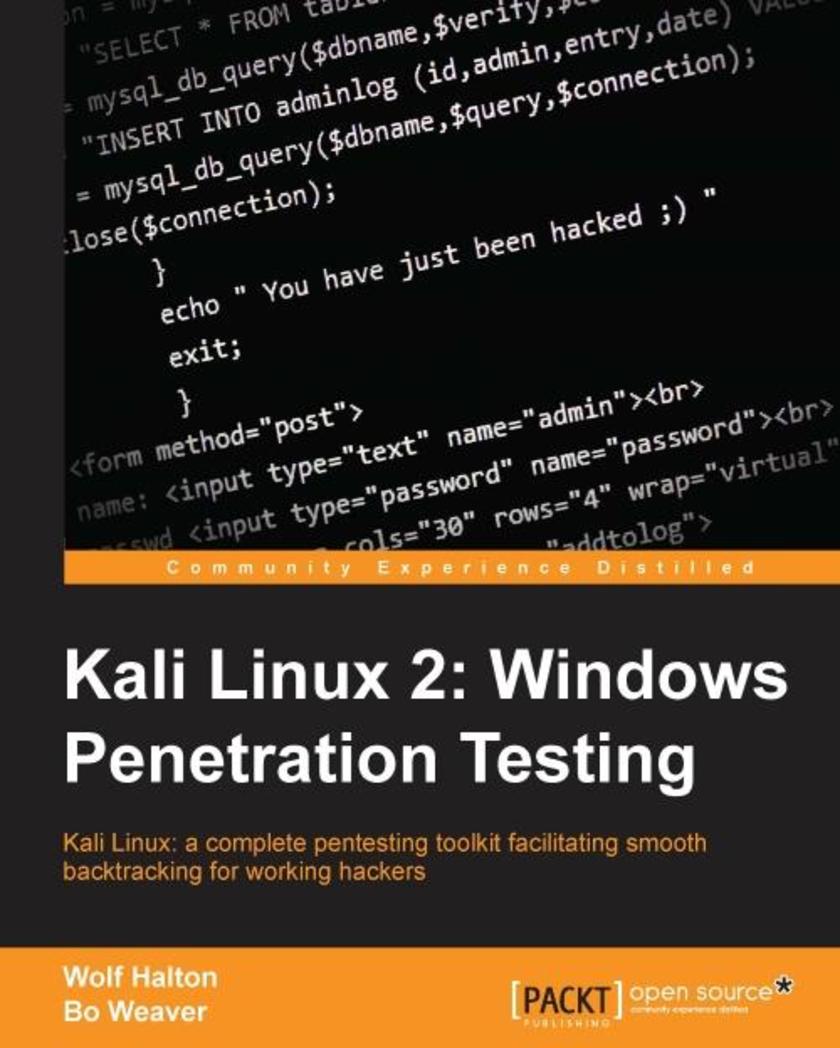
Kali Linux 2: Windows Penetration Testing
¥90.46
Kali Linux: a complete pentesting toolkit facilitating smooth backtracking for working hackers About This Book Conduct network testing, surveillance, pen testing and forensics on MS Windows using Kali Linux Footprint, monitor, and audit your network and investigate any ongoing infestations Customize Kali Linux with this professional guide so it becomes your pen testing toolkit Who This Book Is For If you are a working ethical hacker who is looking to expand the offensive skillset with a thorough understanding of Kali Linux, then this is the book for you. Prior knowledge about Linux operating systems and the BASH terminal emulator along with Windows desktop and command line would be highly beneficial. What You Will Learn Set up Kali Linux for pen testing Map and enumerate your Windows network Exploit several common Windows network vulnerabilities Attack and defeat password schemes on Windows Debug and reverse-engineer Windows programs Recover lost files, investigate successful hacks and discover hidden data in innocent-looking files Catch and hold admin rights on the network, and maintain backdoors on the network after your initial testing is done In Detail Microsoft Windows is one of the two most common OS and managing its security has spawned the discipline of IT security. Kali Linux is the premier platform for testing and maintaining Windows security. Kali is built on the Debian distribution of Linux and shares the legendary stability of that OS. This lets you focus on using the network penetration, password cracking, forensics tools and not the OS. This book has the most advanced tools and techniques to reproduce the methods used by sophisticated hackers to make you an expert in Kali Linux penetration testing. First, you are introduced to Kali's top ten tools and other useful reporting tools. Then, you will find your way around your target network and determine known vulnerabilities to be able to exploit a system remotely. Next, you will prove that the vulnerabilities you have found are real and exploitable. You will learn to use tools in seven categories of exploitation tools. Further, you perform web access exploits using tools like websploit and more. Security is only as strong as the weakest link in the chain. Passwords are often that weak link. Thus, you learn about password attacks that can be used in concert with other approaches to break into and own a network. Moreover, you come to terms with network sniffing, which helps you understand which users are using services you can exploit, and IP spoofing, which can be used to poison a system's DNS cache. Once you gain access to a machine or network, maintaining access is important. Thus, you not only learn penetrating in the machine you also learn Windows privilege’s escalations. With easy to follow step-by-step instructions and support images, you will be able to quickly pen test your system and network. Style and approach This book is a hands-on guide for Kali Linux pen testing. This book will provide all the practical knowledge needed to test your network's security using a proven hacker's methodology. The book uses easy-to-understand yet professional language for explaining concepts.

Practical Windows Forensics
¥90.46
Leverage the power of digital forensics for Windows systems About This Book Build your own lab environment to analyze forensic data and practice techniques. This book offers meticulous coverage with an example-driven approach and helps you build the key skills of performing forensics on Windows-based systems using digital artifacts. It uses specific open source and Linux-based tools so you can become proficient at analyzing forensic data and upgrade your existing knowledge. Who This Book Is For This book targets forensic analysts and professionals who would like to develop skills in digital forensic analysis for the Windows platform. You will acquire proficiency, knowledge, and core skills to undertake forensic analysis of digital data. Prior experience of information security and forensic analysis would be helpful. You will gain knowledge and an understanding of performing forensic analysis with tools especially built for the Windows platform. What You Will Learn Perform live analysis on victim or suspect Windows systems locally or remotely Understand the different natures and acquisition techniques of volatile and non-volatile data. Create a timeline of all the system actions to restore the history of an incident. Recover and analyze data from FAT and NTFS file systems. Make use of various tools to perform registry analysis. Track a system user's browser and e-mail activities to prove or refute some hypotheses. Get to know how to dump and analyze computer memory. In Detail Over the last few years, the wave of the cybercrime has risen rapidly. We have witnessed many major attacks on the governmental, military, financial, and media sectors. Tracking all these attacks and crimes requires a deep understanding of operating system operations, how to extract evident data from digital evidence, and the best usage of the digital forensic tools and techniques. Regardless of your level of experience in the field of information security in general, this book will fully introduce you to digital forensics. It will provide you with the knowledge needed to assemble different types of evidence effectively, and walk you through the various stages of the analysis process. We start by discussing the principles of the digital forensics process and move on to show you the approaches that are used to conduct analysis. We will then study various tools to perform live analysis, and go through different techniques to analyze volatile and non-volatile data. Style and approach This is a step-by-step guide that delivers knowledge about different Windows artifacts. Each topic is explained sequentially, including artifact analysis using different tools and techniques. These techniques make use of the evidence extracted from infected machines, and are accompanied by real-life examples.

3D Game Design with Unreal Engine 4 and Blender
¥90.46
Combine the powerful UE4 with Blender to create visually appealing and comprehensive game environments About This Book The only resource that shows how you can incorporate Blender into your Unreal Engine 4 Game environment Create amazing 3D game environments by leveraging the power of Blender and Unreal Engine 4 Practical step-by-step approach with plenty of illustrative examples to get you started immediately Who This Book Is For This book would be ideal for 3D artists and game designers who want to create amazing 3D game environments and leverage the power of Blender with Unreal Engine 4. 3D design basics would be necessary to get the most out of this book. Some previous experience with Blender would be helpful but not essential What You Will Learn Create a fully functioning game level of your own design using Blender and Unreal Engine 4 Customize your level with detailed 3D assets created with Blender Import assets into Unreal Engine 4 to create an amazing finished product Build a detailed dynamic environment with goals and an ending Explore Blender’s incredible animation tools to animate elements of your game Create great environments using sound effects, particle effects, and class blueprints In Detail Unreal Engine 4 now has support for Blender, which was not available in earlier versions. This has opened up new possibilities and that is where this book comes in. This is the first book in the market combining these two powerful game and graphic engines. Readers will build an amazing high-level game environment with UE4 and will show them how to use the power of Blender 3D to create stunning animations and 3D effects for their game. This book will start with creating levels, 3D assets for the game, game progression, light and environment control, animation, and so on. Then it will teach readers to add amazing visual effects to their game by applying rendering, lighting, rigging, and compositing techniques in Blender. Finally, readers will learn how to smoothly transfer blender files to UE4 and animate the game assets. Each chapter will add complexities to the game environment. Style and approach This will have a clear, step-by-step approach to creating game assets in Blender and then importing them to UE4 to create stunning game environments. All asset creation techniques are explained in detail along with tips on how to use them to create your own game environments. The book offers end-to-end coverage of how to design a game level from scratch.
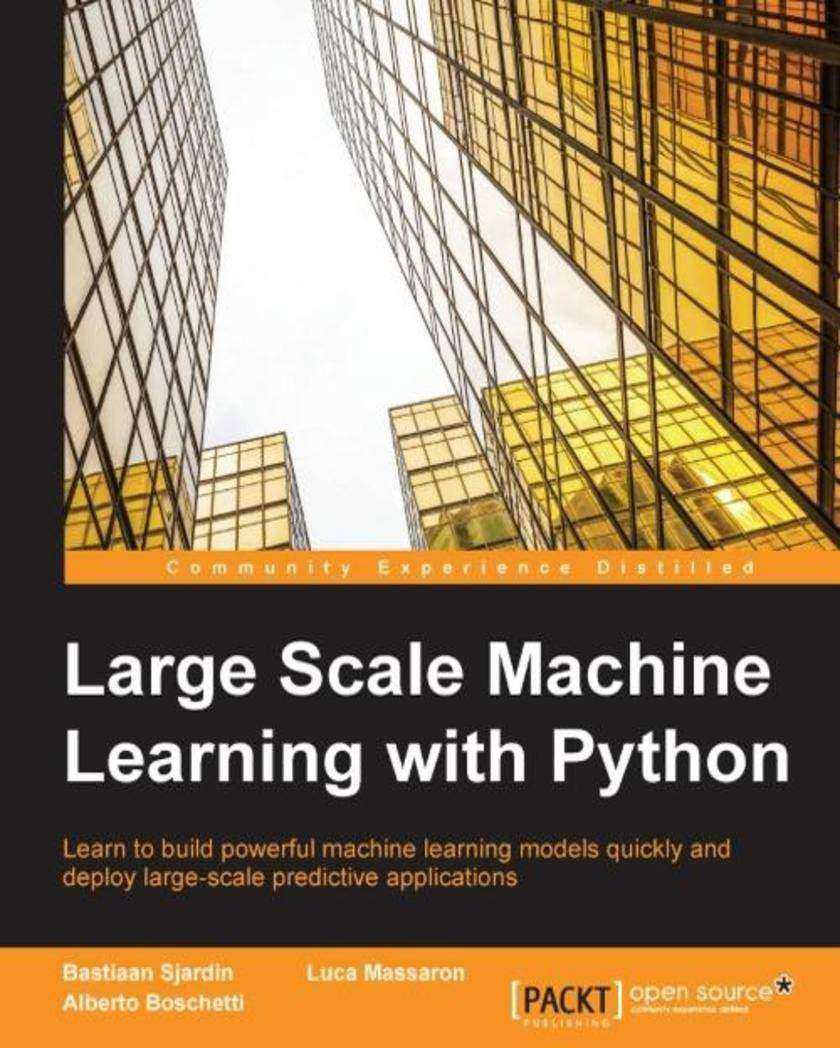
Large Scale Machine Learning with Python
¥90.46
Learn to build powerful machine learning models quickly and deploy large-scale predictive applications About This Book Design, engineer and deploy scalable machine learning solutions with the power of Python Take command of Hadoop and Spark with Python for effective machine learning on a map reduce framework Build state-of-the-art models and develop personalized recommendations to perform machine learning at scale Who This Book Is For This book is for anyone who intends to work with large and complex data sets. Familiarity with basic Python and machine learning concepts is recommended. Working knowledge in statistics and computational mathematics would also be helpful. What You Will Learn Apply the most scalable machine learning algorithms Work with modern state-of-the-art large-scale machine learning techniques Increase predictive accuracy with deep learning and scalable data-handling techniques Improve your work by combining the MapReduce framework with Spark Build powerful ensembles at scale Use data streams to train linear and non-linear predictive models from extremely large datasets using a single machine In Detail Large Python machine learning projects involve new problems associated with specialized machine learning architectures and designs that many data scientists have yet to tackle. But finding algorithms and designing and building platforms that deal with large sets of data is a growing need. Data scientists have to manage and maintain increasingly complex data projects, and with the rise of big data comes an increasing demand for computational and algorithmic efficiency. Large Scale Machine Learning with Python uncovers a new wave of machine learning algorithms that meet scalability demands together with a high predictive accuracy. Dive into scalable machine learning and the three forms of scalability. Speed up algorithms that can be used on a desktop computer with tips on parallelization and memory allocation. Get to grips with new algorithms that are specifically designed for large projects and can handle bigger files, and learn about machine learning in big data environments. We will also cover the most effective machine learning techniques on a map reduce framework in Hadoop and Spark in Python. Style and approach This efficient and practical title is stuffed full of the techniques, tips and tools you need to ensure your large scale Python machine learning runs swiftly and seamlessly. Large-scale machine learning tackles a different issue to what is currently on the market. Those working with Hadoop clusters and in data intensive environments can now learn effective ways of building powerful machine learning models from prototype to production. This book is written in a style that programmers from other languages (R, Julia, Java, Matlab) can follow.
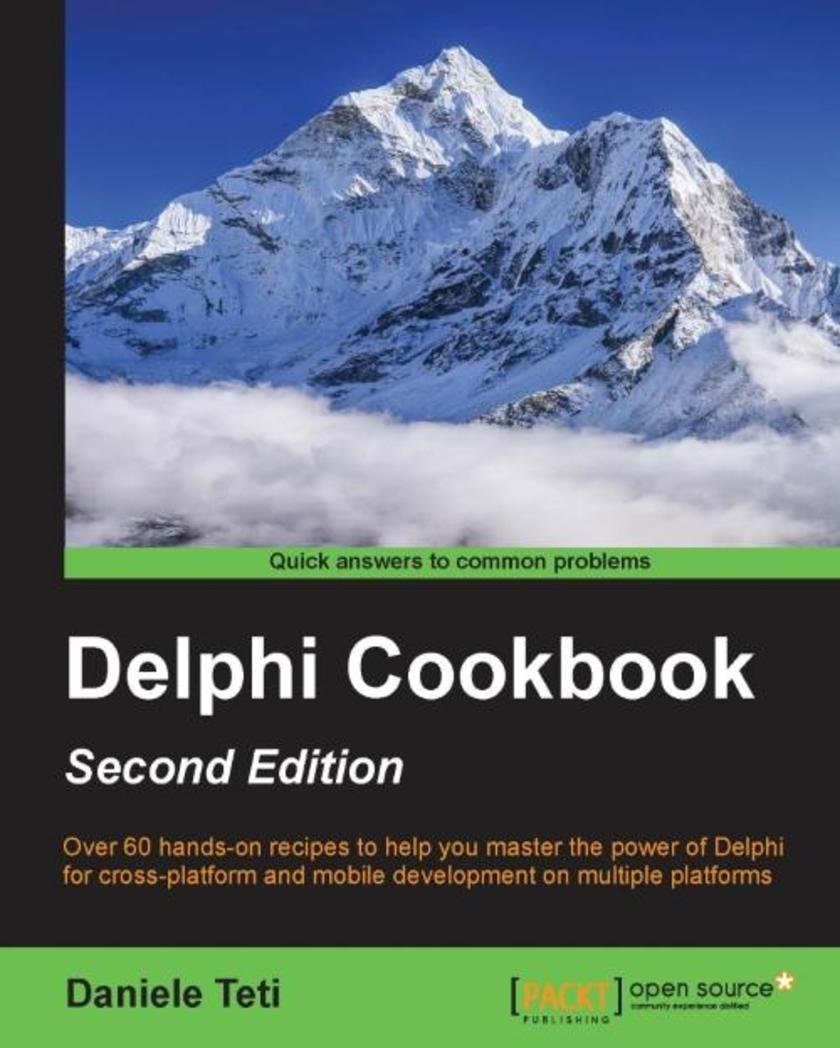
Delphi Cookbook - Second Edition
¥90.46
Over 60 hands-on recipes to help you master the power of Delphi for cross-platform and mobile development on multiple platforms About This Book Get to grips with Delphi to build and deploy various cross-platform applications Design, develop, and deploy real-world applications by implementing a single source codebase This swift guide will increase your productivity to develop applications with Delphi Who This Book Is For If you are an intermediate developer with a basic knowledge of Delphi and you want to develop cross-platform applications, then this book is for you. Familiarity with the fundamentals of RAD (Rapid Application Development) Studio is expected. What You Will Learn Develop visually stunning applications using FireMonkey Deploy LiveBinding effectively with the right OOP approach Create server-side programs to serve RESTful web services and provide data to your mobile apps Use well-defined GUI design patterns to build mobile applications that provide a great user experience Build mobile apps that read data from a remote server efficiently Call the platform native API on Android and iOS even for an unpublished API Manage software customization for your customer by making better use of an extended RTTI Implement the most popular design pattern without wasting too much time on debugging and bug fixing In Detail Delphi is a cross-platform Integrated Development Environment (IDE) that supports rapid application development for Microsoft Windows, Apple Mac OS X, Google Android, and Apple iOS. It helps you to concentrate on the real business and save yourself the pain of wandering amid GUI widget details, or having to tackle inter-platform incompatibilities. It also has a wide range of drag-and-drop controls, helping you code your business logic into your business model, and it compiles natively for desktop and mobile platforms. This book will teach you how to design and develop applications, deploy them on the cloud platform, and distribute them within an organization via Google Play and other similar platforms. You will begin with the basics of Delphi and get acquainted with JSON format strings, XSLT transformations, unicode encodings and various types of streams. We then move on to more advanced topics such as developing higher-order functions and using enumerators and RTTI. You will get an understanding of how Delphi RTL functions and how to use FireMonkey in a VCL application. We will then cover topics such as multithreading, using the parallel programming library and putting Delphi on a server. We will also take a look at the new feature of WebBroker Apache modules and then ride the mobile revolution with FireMonkey. By the end of the book, you will be able to develop and deploy cross-platform applications using Delphi. Style and approach Delphi Cookbook is an easy-to-follow guide, rich with hands-on examples of real-world programming tasks in Delphi.




 购物车
购物车 个人中心
个人中心



